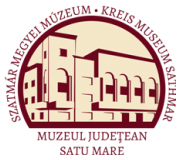Olariu, Gheorghina (szerk.): Sesiunea Internaţională de Restaurare - Conservare (Satu Mare, 1997)
Textile
restauration laboratories (non - ionic wetting agent 0,5 %, distiled water 86,4 %, hydrocloric acid 5,1 % and thiourea 8 %). The thiourea is used to clean the silver but only in acid medium. Therefore it will enter the composition of the silver dip. The hydrochloric acid, the acive component of this bath, will solve the black sulphide. Then the thiourea ‘‘catches’’ the released silver into a complex compound which will be eliminated together with the bath. The hydrochloric acid from the silver dip has performed, beside silver sulphide removal, the dissolution of the compounds from skull the composition embedded into the textile. The elimination of those stiffening products led to piece getting back its flexibility characteristic for a textile, allowing thus to unfold it and set it in a plain position. Repeated rinsings with distiled water where then used to obtain a strictly controlled complete neutralization. In this phase the textile had its mechanical resistance much diminished, and most elements composing the motif were dispersed (PHOTO 4). That was why we decided to consolidate it by sewing it on a cotton fabric died in the colour of the original substrate. At the same time with the consolidation, we performed the reconstruction of the floral motives, by fastening the dispersed elements back in their place, by analogy with a textile fragment preserved intact (PHOTO 5). The consolidation was done on frame with cocoon threads died in the piece s colour (PHOTO 5). Restored with lot of scrupulosity and care the head cloth became an important piece by its historical documentary and artistical value, returned both to the visitors and the museological research. 253
